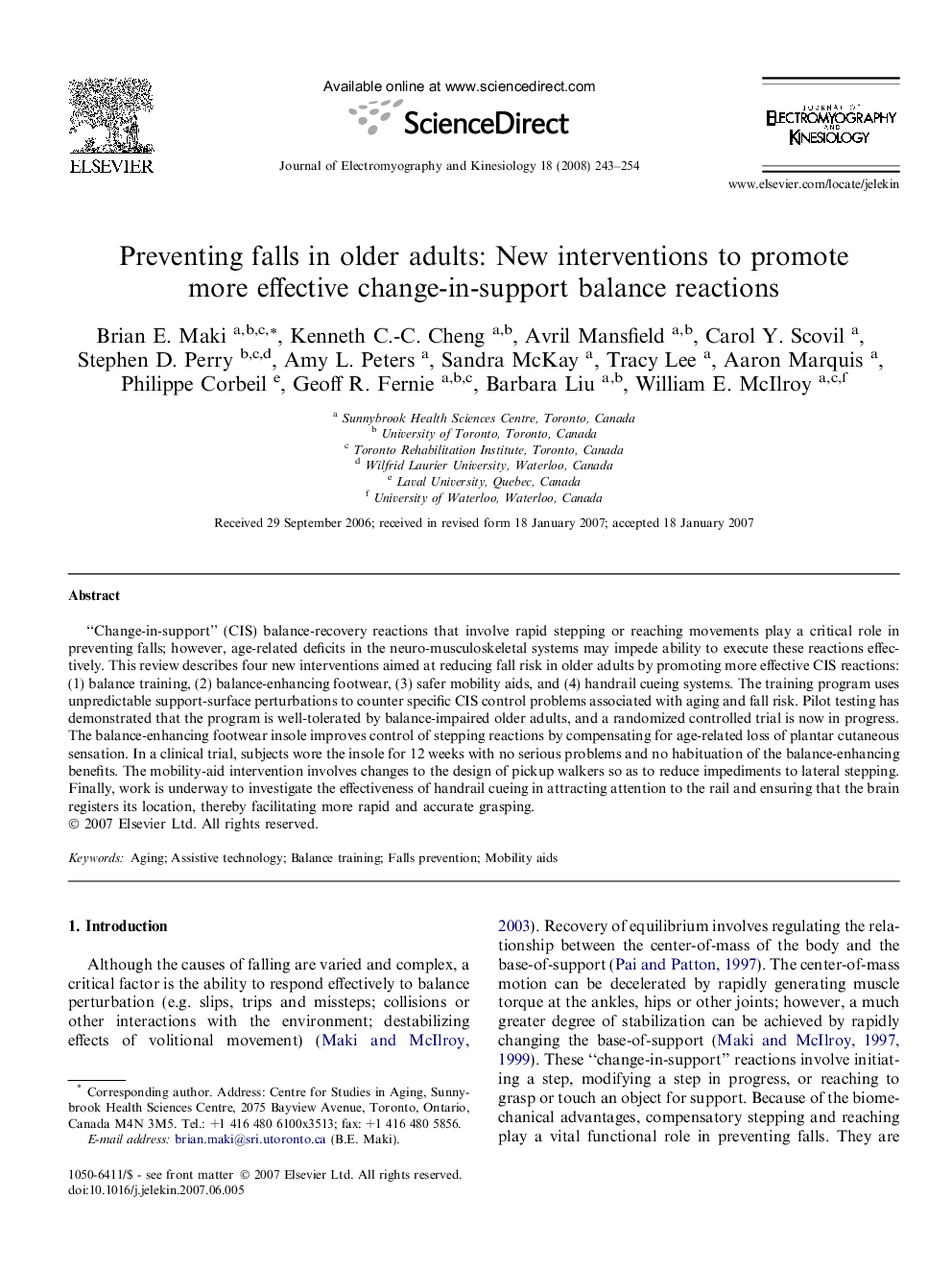| Article ID | Journal | Published Year | Pages | File Type |
|---|---|---|---|---|
| 4065742 | Journal of Electromyography and Kinesiology | 2008 | 12 Pages |
“Change-in-support” (CIS) balance-recovery reactions that involve rapid stepping or reaching movements play a critical role in preventing falls; however, age-related deficits in the neuro-musculoskeletal systems may impede ability to execute these reactions effectively. This review describes four new interventions aimed at reducing fall risk in older adults by promoting more effective CIS reactions: (1) balance training, (2) balance-enhancing footwear, (3) safer mobility aids, and (4) handrail cueing systems. The training program uses unpredictable support-surface perturbations to counter specific CIS control problems associated with aging and fall risk. Pilot testing has demonstrated that the program is well-tolerated by balance-impaired older adults, and a randomized controlled trial is now in progress. The balance-enhancing footwear insole improves control of stepping reactions by compensating for age-related loss of plantar cutaneous sensation. In a clinical trial, subjects wore the insole for 12 weeks with no serious problems and no habituation of the balance-enhancing benefits. The mobility-aid intervention involves changes to the design of pickup walkers so as to reduce impediments to lateral stepping. Finally, work is underway to investigate the effectiveness of handrail cueing in attracting attention to the rail and ensuring that the brain registers its location, thereby facilitating more rapid and accurate grasping.
